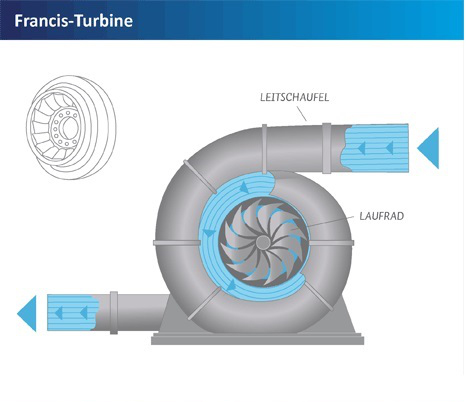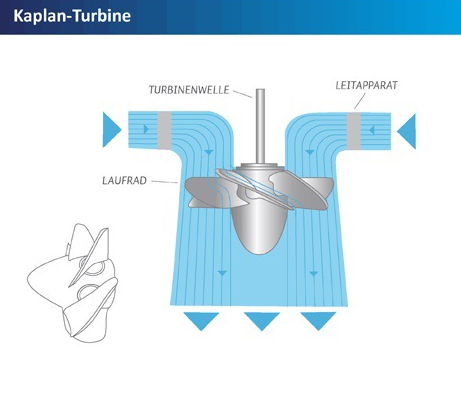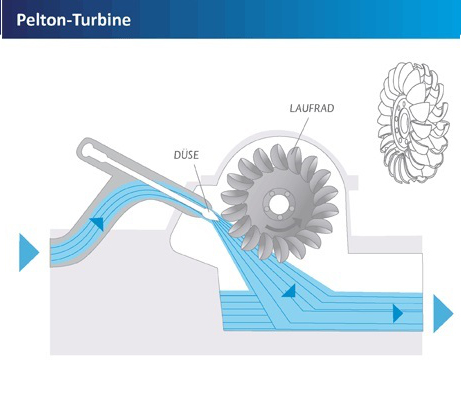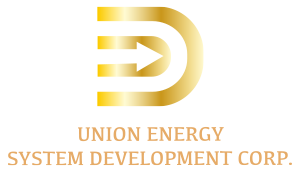
HYDROPOWER IS THE MOST WELL-ESTABLISHED ENERGY SOURCE IN THE WORLD.
HYDROPOWER IS THE MOST WELL-ESTABLISHED ENERGY SOURCE IN THE WORLD.
As early as 2,000 years ago, in 300 BC, the ancient Greeks used “hydropower” for agricultural irrigation and production of power in their grain mills using the “water wheel” principle.
With the invention of the electromagnetic principle by Faraday at the beginning of the 19th Century, the principle of a rotating generator and motor was introduced. While different types of water turbines were invented in parallel, it was only in 1895 that the first large HPP was installed in the Niagara Falls power station.
Hydropower still makes up a significant part of the global energy production. Given the urgent challenge of lowering CO2 emissions, this technology is becoming increasingly important as a renewable energy source.
Hydropower is a ”real” asset due to its long lifespan and good predictability.
Hydropower will continue to play a major role in the future of clean power generation.
Within the renewable energy sector, hydropower is the leading source of generating electricity worldwide, supplying around 71% of all renewable electricity.
The importance of the growth and development of the hydropower sector has increased in recent years in response to the promotion of renewable energy, to help fulfil sustainable development goals.
Looking ahead to 2030, hydropower is forecast to hold on to its share in the world’s total power generation amid the expected increasing contribution of power generated from solar and wind technologies.
The principles of Hydropower – Turbine types

Turbine for pressure head between 10 and 200 m, but the record holding type is installed I n Tyrol/Austria with 690m rated head. Typical installation reach up to 800MW installed capacity. Water enter in tangential direction in between regulated guide vanes onto he runner-wheel. Passing the rotor blades water exit the turbine in axial direction through a draft tube into the water outlet channel. Regulation over guide vanes provide a good efficiency over a brought band of available flow. Sizes per unit can vary from 10kW up to 700MW, typical fro small and medium Hydropower plants is a capacity up to 30MW.
In special cases it can also be designed as a combined pump-turbine.

Turbine for low pressure head from 1 – 70 m, can be designed for a wide range of available flow. Water flows in axial direction through the turbine and is normally double regulated. Wicked gates on the inlet controls the amount of water flow and the adjustable propellers on the runner regulate the flow direction in order to reach the optimal output and stream of water flow. Efficiencies up to 95% are achievable with modern design and intelligent regulation systems.
Typical installments are river dam types with a huge variation of flow and typical low water level differences. Single units are available from 100kW up to 200MW.

Turbine type for high head installation 10 – 1800 m (there is no theoretical limit). This type of free flow, impulse turbine can be used in a wide range of installations. Using the principle of the old water-wheel, water flows through 1 to 8 nozzles in a free flow onto the spoon shaped buckets of the runner.
As the 1 – 8 nozzles can be regulated separately the operating range of a Pelton turbine reaches a wide range of available flow. Pelton turbines can be built in a wide range of capacity 10 kW up to 400 MW. The picture shows a one nozzle turbine.
